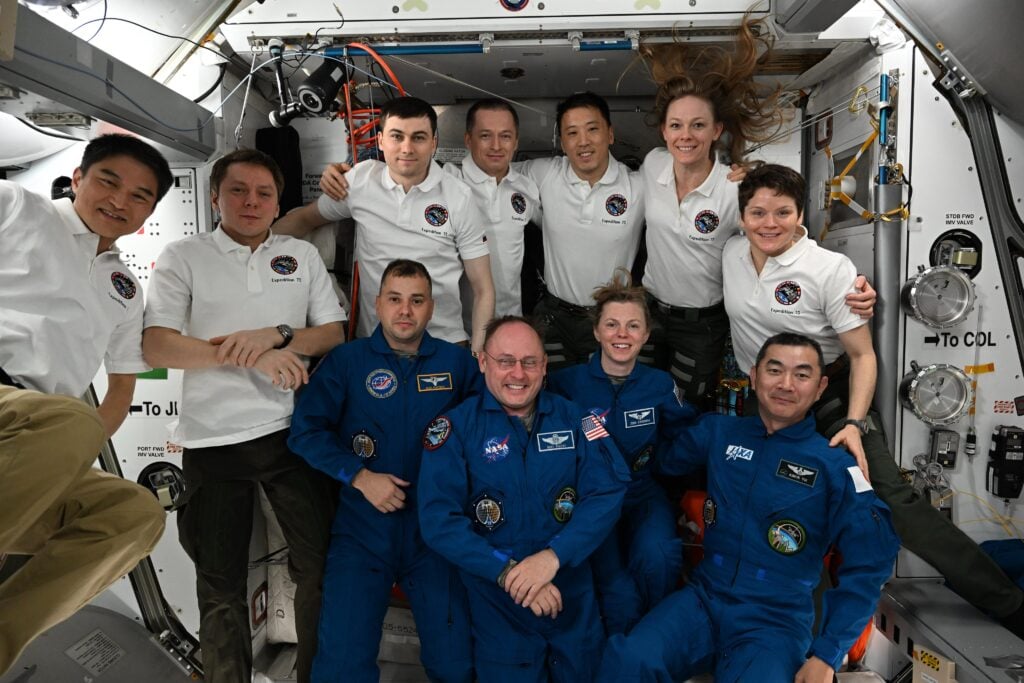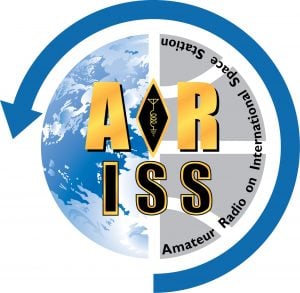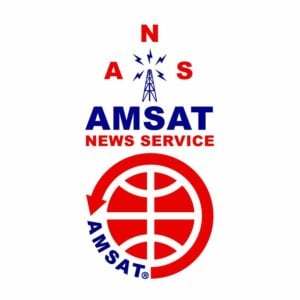
AMSAT News Service
ANS-243
August 31, 2025
In this edition:
- 2025 AMSAT Symposium Prices Increase September 16th
- 2025 AMSAT Board of Directors Election Continues
- MO-122 Silent, Recovery Efforts Underway
- NASA Seeks Volunteers to Track Artemis II Mission
- Changes to AMSAT TLE Distribution for August 29, 2025
- ARISS News
- AMSAT Ambassador Activities
- Satellite Shorts From All Over
The AMSAT News Service bulletins are a free, weekly news and information service of AMSAT, The Radio Amateur Satellite Corporation. ANS publishes news related to Amateur Radio in Space including reports on the activities of a worldwide group of Amateur Radio operators who share an active interest in designing, building, launching and communicating through analog and digital Amateur Radio satellites.
The news feed on https://www.amsat.org publishes news of Amateur Radio in Space as soon as our volunteers can post it.
Please send any amateur satellite news or reports to: ans-editor [at] amsat.org
You can sign up for free e-mail delivery of the AMSAT News Service Bulletins via the ANS List; to join this list see: https://mailman.amsat.org/postorius/lists/ans.amsat.org/
2025 AMSAT Symposium Prices Increase September 16th
Discounted registration for the 2025 AMSAT Symposium, to be held October 17-19, 2025 in Phoenix, AZ will be available through September 15th. Prices increase on September 16th.
For details, visit https://www.amsat.org/43rd-amsat-space-symposium-and-annual-general-meeting/
Proposals for Symposium papers and presentations are invited on any topic of interest to the amateur satellite community. We request a tentative title of your paper or presentation as soon as possible, with final copy submitted by October 8th for inclusion in the Symposium Proceedings.
Proposals for presentations at the Symposium do not require a paper. Presentations will be recorded and made available on AMSAT’s YouTube Channel and transcribed and published with its slides in the Proceedings.
Proposals should be sent to Frank Karnauskas, N1UW via [email protected]
[ANS thanks AMSAT for the above information]
AMSAT Remove Before Flight Key Tags Now Available
Yes, These are the Real Thing!
Your $20 Donation Goes to Help Fly a Fox-Plus Satellite
Includes First Class Postage (Sorry – U.S. Addresses Only)
Order Today at https://www.amsat.org/product/amsat-remove-before-flight-keychain
2025 AMSAT Board of Directors Election Continues
The nomination period for the 2025 AMSAT Board of Directors Election ended on June 15, 2025. The following candidates have been duly nominated and their candidate statements can be found at link that follows:
Barry Baines, WD4ASW
Jerry Buxton, NØJY
Drew Glasbrenner, KO4MA
Frank Karnauskas, N1UW
Douglas Tabor, N6UA
As four seats on the Board of Directors are up for election this year, the four candidates receiving the largest number of votes shall be declared elected to the seats. The candidate receiving the next largest number of votes shall be declared the First Alternate. The voting period opened on July 15, 2025 and shall conclude on September 15, 2025. Results will be announced no later that September 30, 2025.
AMSAT members may review the candidate statements and cast their ballots at https://launch.amsat.org/2025-BoD-Election
[ANS thanks Douglas Tabor, N6UA, AMSAT Secretary, for the above information]
The 2025 AMSAT President’s Club Coins Are Here!
Celebrating the 40th Anniversary of Amateur Radio on Human Spaceflight
Help Support GOLF and Fox Plus.
Join the AMSAT President’s Club today!
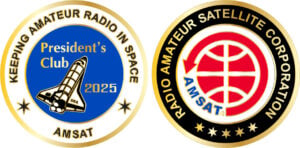
MO-122 Silent, Recovery Efforts Underway
MO-122 (MESAT1), which carries an AMSAT Linear Transponder Module, went silent some time after the collection of the last recorded telemetry frame on August 25, 2025 at 19:09:49 UTC.
Analysis of the telemetry collected shows nothing suspect or out of the ordinary and the AMSAT command team is working with the satellite owners to see if operations can be restored.
Satellite operators are encouraged to monitor the beacon and transponder frequencies for signals. Be sure to report any reception on the AMSAT Live OSCAR Satellite Status Page.
[ANS thanks Drew Glasbrenner, KO4MA, AMSAT Vice President – Operations, and Mark Hammond, N8MH, AMSAT Command Station, for the above information]
NASA Seeks Volunteers to Track Artemis II Mission
NASA seeks volunteers to passively track the Artemis II Orion spacecraft as the crewed mission travels to the Moon and back to Earth.
The Artemis II test flight, a launch of the agency’s SLS (Space Launch System) rocket and Orion spacecraft, will send NASA astronauts Reid Wiseman, Victor Glover, and Christina Koch, along with CSA (Canadian Space Agency) astronaut Jeremy Hansen, on an approximately 10-day mission around the Moon.
The mission, targeted for no later than April 2026, will rely on NASA’s Near Space Network and Deep Space Network for primary communications and tracking support throughout its launch, orbit, and reentry. However, with a growing focus on commercialization, NASA wants to further understand industry’s tracking capabilities.
This collaboration opportunity builds upon a previous request released by NASA’s SCaN (Space Communication and Navigation) Program during the Artemis I mission, where ten volunteers successfully tracked the uncrewed Orion spacecraft in 2022 on its journey thousands of miles beyond the Moon and back.
During the Artemis I mission, participants – ranging from international space agencies, academic institutions, commercial companies, nonprofits, and private citizens – attempted to receive Orion’s signal and use their respective ground antennas to track and measure changes in the radio waves transmitted by Orion.“By offering this opportunity to the broader aerospace community, we can identify available tracking capabilities outside the government,” said Kevin Coggins, NASA’s deputy associate administrator for SCaN at NASA Headquarters in Washington. “This data will help inform our transition to a commercial-first approach, ultimately strengthening the infrastructure needed to support Artemis missions and our long-term Moon to Mars objectives.”
Responses are due by 5 p.m. EDT on Monday, Oct. 27.
The opportunity announcement can be found at https://sam.gov/workspace/contract/opp/50d4e81f54e34118a8164fb786b554a6/view
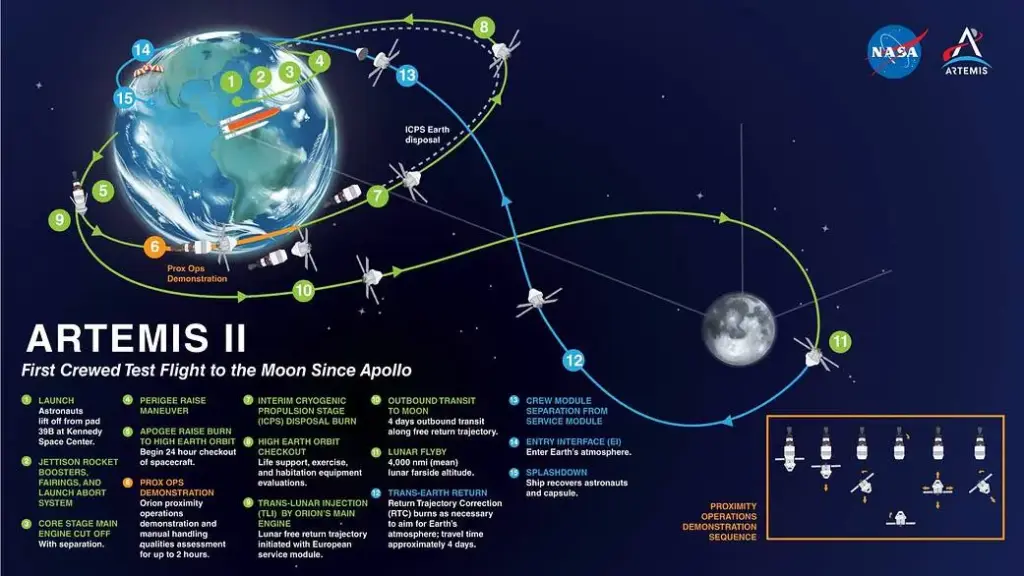
[ANS thanks NASA for the above information]
Changes to AMSAT TLE Distribution for August 29, 2025
Two Line Elements or TLEs, often referred to as Keplerian elements or keps in the amateur community, are the inputs to the SGP4 standard mathematical model of spacecraft orbits used by most amateur tracking programs. Weekly updates are completely adequate for most amateur satellites. TLE bulletin files are updated daily in the first hour of the UTC day. New bulletin files will be posted immediately after reliable elements become available for new amateur satellites. More information may be found at https://www.amsat.org/keplerian-elements-resources/.
This week there are no additions or deletions to the AMSAT TLE distribution.
[ANS thanks Joe Fitzgerald, KM1P, AMSAT Orbital Elements Manager, for the above information]
Need new satellite antennas?
Purchase an M2 LEO-Pack from the AMSAT Store!
When you purchase through AMSAT, a portion of the proceeds goes towards Keeping Amateur Radio in Space.
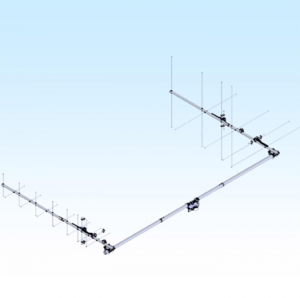
ARISS News
Amateurs and others around the world may listen in on contacts between amateurs operating in schools and allowing students to interact with astronauts and cosmonauts aboard the International Space Station. The downlink frequency on which to listen is 145.800 MHz worldwide.
Scheduled Contacts
Ethiopian Space Science Society, Addis Ababa, Ethiopia Telebridge via VK4KHZ
The ISS callsign is presently scheduled to be NA1SS
The downlink frequency is presently scheduled to be 145.800 MHz
The scheduled crewmember is Kimiya Yui KG5BPH
The ARISS mentor is IN3GHZ
Contact is go for: Thu 2025-09-04 08:23:14 UTC 65 deg)
Research Vessel E/V Nautilus in the Pacific, Howland and Baker Island, US Territory, telebridge via K6DUE
The ISS callsign is presently scheduled to be NA1SS
The downlink frequency is presently scheduled to be 145.800 MHz
The scheduled crewmember is Zena Cardman KJ5CMN
The ARISS mentor is KI5SDP
Contact is go for: Thu 04-Sep-25 09:03:21 UTC 36 deg
Pan American International School, Luque, Paraguay, direct via ZP5DBI
The ISS callsign is presently scheduled to be NA1SS
The downlink frequency is presently scheduled to be 145.800 MHz
The scheduled crewmember is Kimiya Yui KG5BPH
The ARISS mentor is VE6JBJ
Contact is go for: Fri 2025-09-05 11:42:08 UTC 36 deg
Many times a school may make a last minute decision to do a Livestream or run into a last minute glitch requiring a change of the URL but we at ARISS may not get the URL in time for publication. You can always check https://live.ariss.org/ to see if a school is Livestreaming.
As always, if there is an EVA, a docking, or an undocking; the ARISS radios are turned off as part of the safety protocol.
The crossband repeater continues to be active (145.990 MHz up {PL 67} & 437.800 MHz down), If any crewmember is so inclined, all they have to do is pick up the microphone, raise the volume up, and talk on the crossband repeater. So give a listen, you just never know.
Note, all times are approximate. It is recommended that you do your own orbital prediction or start listening about 10 minutes before the listed time.
The latest information on the operation mode can be found at https://www.ariss.org/current-status-of-iss-stations.html
The latest list of frequencies in use can be found at https://www.ariss.org/contact-the-iss.html
[ANS thanks Charlie Sufana, AJ9N, one of the ARISS operation team mentors for the above information]
Want to fly the colors on your own grid expedition?
Get an AMSAT car flag and other neat stuff from our Zazzle store!
25% of the purchase price of each product goes towards Keeping Amateur Radio in Space
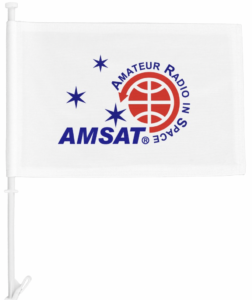
AMSAT Ambassador Activities
AMSAT Ambassadors provide presentations, demonstrate communicating through amateur satellites, and host information tables at club meetings, hamfests, conventions, maker faires, and other events.
AMSAT Ambassador Clint Bradford, K6LCS, says,
“Think a 75-minute presentation on “working the easy satellites” would be appropriate for your club or event? Let me know by emailing me at k6lcsclint (at) gmail (dot) com or calling me at 909-999-SATS (7287)!”
Clint has NEVER given the exact same show twice: EACH of the 150+ presentations so far has been customized/tailored to their audiences.
Scheduled Events
September 6, 2025
Greater Louisville Hamfest
Paroquet Springs Conference Centre
395 Paroquet Springs Drive
Shepherdsville, KY 40165
W4FCL
October 11, 2025
North Star Radio Convention
Hennepin Technical College
9000 Brooklyn Boulevard
Brooklyn Park, MN 55445
https://northstarradio.org/
ADØHJ
October 16, 17, 18, 19, 2025
AMSAT Board of Directors Meeting and 43rd Annual AMSAT Space Symposium & Annual General Meeting
Holiday Inn & Suites Phoenix Airport North
1515 North 44th Street
Phoenix, Arizona 85008
Details at https://www.amsat.org/2025-symposium/
Interested in becoming an AMSAT Ambassador? AMSAT Ambassadors provide presentations, demonstrate communicating through amateur satellites, and host information tables at club meetings, hamfests, conventions, maker faires, and other events.
For more information go to: https://www.amsat.org/ambassador/
[ANS thanks Bo Lowrey, W4FCL, Director – AMSAT Ambassador Program, for the above information]
Satellite Shorts from All Over
+ Congratulations to Maksym “Max” Romenskyy, SA5IKN / EI6KC / M0SKN, who has become the first person with three ARRL DXCC Satellite awards. Most recently, he received DXCC Satellite #542 as EI6KC. This was also the first DXCC Satellite awarded in Ireland. He also holds DXCC Satellite #385 as M0SKN from England and DXCC Satellite #421 as SA5IKN in Sweden. Max also holds Satellite WAZ awards from all three entities (ANS thanks Max, SA5IKN/EI6KC/M0SKN).
+ Ten-Koh 2 is expected to be deployed from the International Space Station on October 21, 2025. Ten-Koh 2 includes a V/u linear transponder, digitalker, camera system, and 5.8 GHz CW beacon. Information can be found at https://iaru.amsat-uk.org/finished_detail.php?serialnum=834 and here.
Join AMSAT today at https://launch.amsat.org/
In addition to regular membership, AMSAT offers membership to:
- Societies (a recognized group, clubs or organization).
- Primary and secondary school students are eligible for membership at one-half the standard yearly rate.
- Post-secondary school students enrolled in at least half time status shall be eligible for the student rate for a maximum of 6 post-secondary years in this status.
- Memberships are available for annual and lifetime terms.
Contact info [at] amsat.org for additional membership information.
73 and remember to help Keep Amateur Radio in Space!
This week’s ANS Editor,
Paul Stoetzer, N8HM
n8hm [at] arrl.net
ANS is a service of AMSAT, the Radio Amateur Satellite Corporation, 712 H Street NE, Suite 1653, Washington, DC 20002
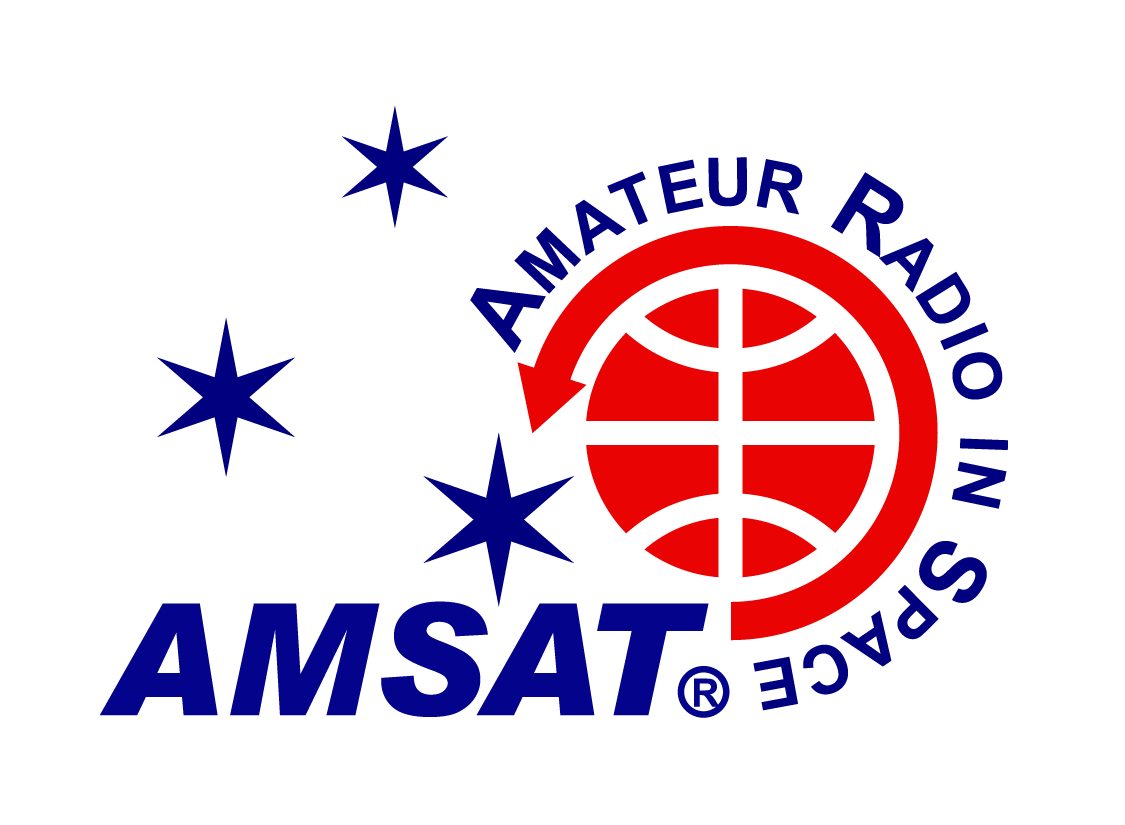

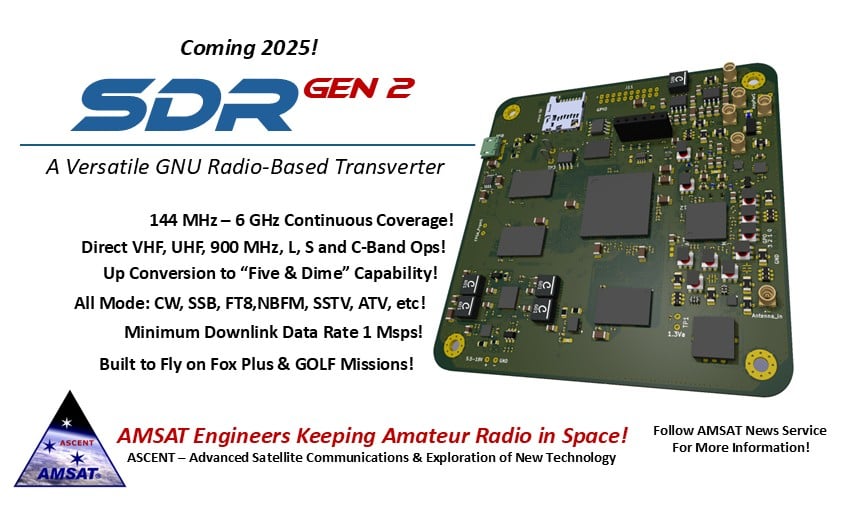
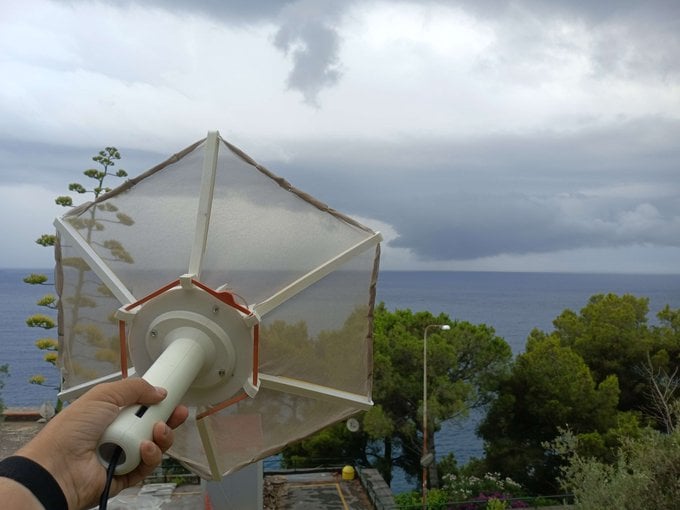
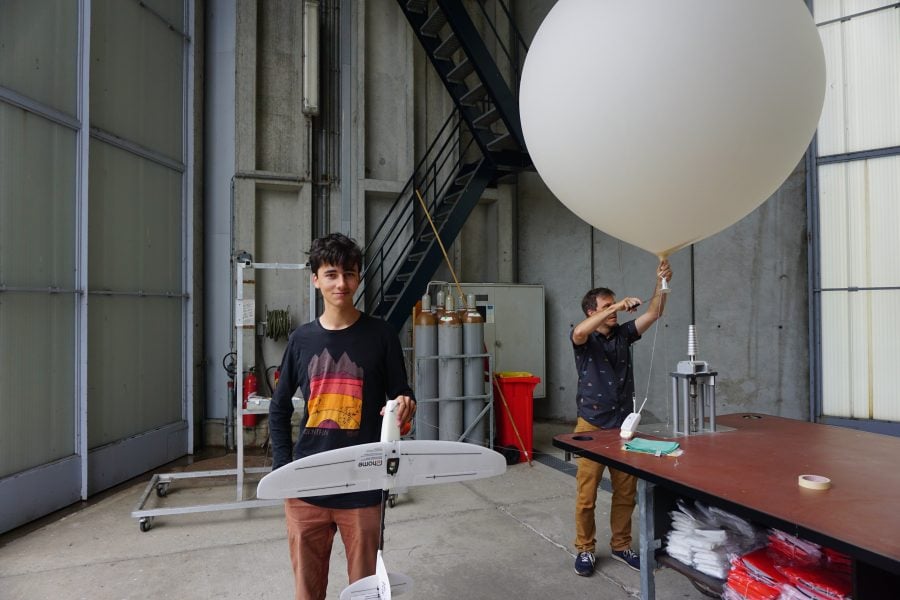
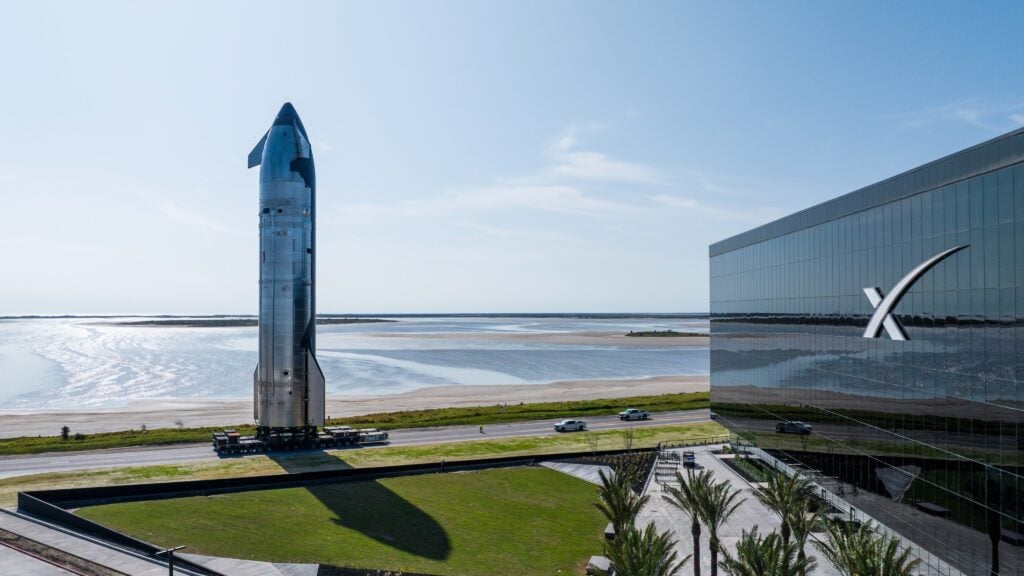
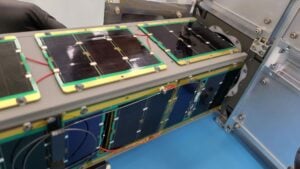


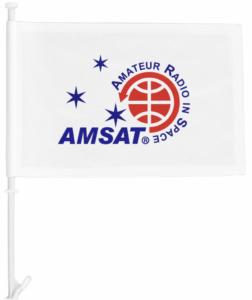

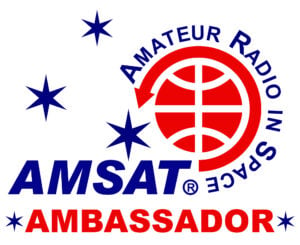
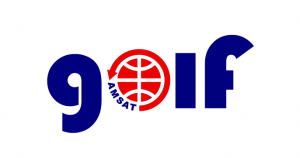

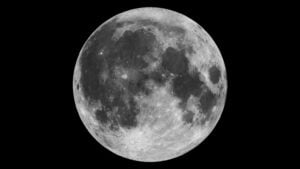 (Photo credit: NASA)
(Photo credit: NASA)